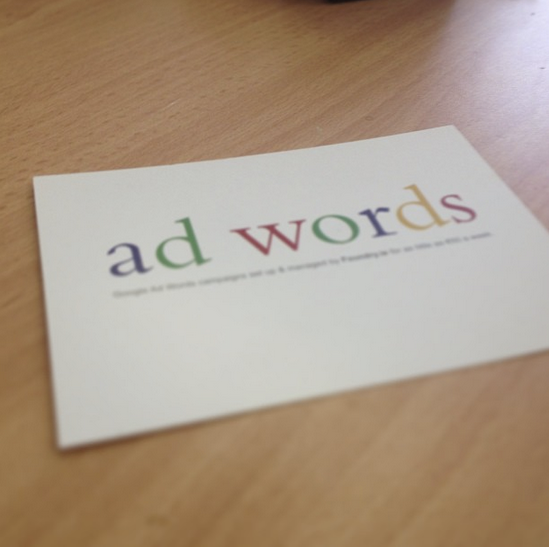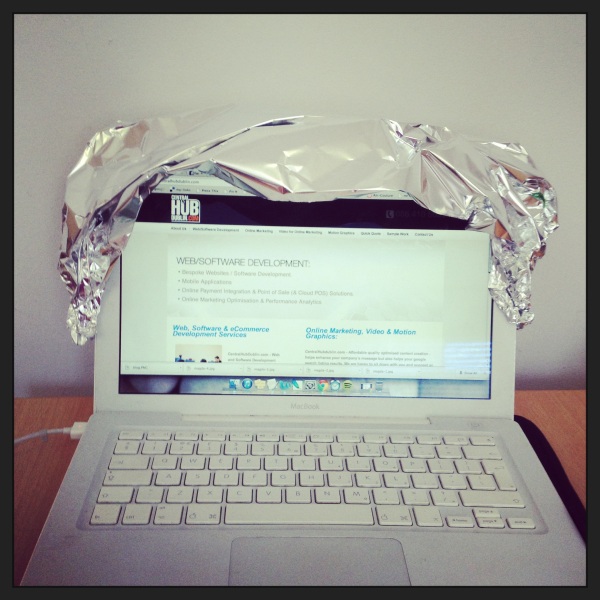Google, the world’s most used search engine, has had a headquarters in Dublin since 2003, with new plans to open an digital innovation space, also in Dublin’s Docklands, we take a look at where Google started out and what we can expect from their exciting new development here.
Facebook Introduces Hashtags for Desktop Version
Hashtags have pretty much ‘belonged’ to Twitter for the years since they were introduced, but June 2013 saw the introduction of ‘hashtagging’ categories in Facebook posts. June wasn’t the first time Facebook users added hashtags to posts, but it was the first time they became clickable to reveal more posts and images using the same hashtag. So far it’s been introduced for the desktop version and has not crossed over into mobile yet, but I’m sure it’s on it’s way. So how can you use this to aid online marketing of your brand? And most importantly – will it catch on?
Google AdWords Vs. Organic SEO – Which Will Work Better For You?
If you’ve ever used Google to search for a product or service either in your local area or online, you probably get the feeling a lot of other people search for businesses in the same way. According to a study by BIA and Kelsey’s, you’d be right in thinking that. A survey carried out by them revealed that 90% of people use search engines when researching products and services in their local area.
Use a Web Video To Increase Business Online & Offline
Video production is no longer an advertising method used only by larger businesses with even larger budgets. Digital technology and the popularity of video as an online communication tool has made video as a sales too that is accessible and affordable, no mater what size your business is. Here we take a look at just some of the ways a web video on your home page, can help you sell your product, service and brand.
1. Multiple Ways To Take in Information Easily & Quickly
Studies have shown that there are four main types of ‘learners’. This applies to the different ways individuals tend to best take in and understand information. Today, it’s becoming more common for teachers and lecturers to try to appeal to all these different learning types in order to have the best effect on their audience. The same can be applied to how you talk to your customers. The methods of learning include those who take in information best visually, auditory learners, read-write learners and kinaesthetic – or movement oriented learning. Video lends itself to incorporating these various techniques better than any other medium. If you want all potential customers to really hear you, a web video or motion graphic presentation is vital.
2. Motion Graphics & Videos Are Attractive, Appealing & Enticing
No business has ever hoped to bore their customers, we all want people to be as excited about what we offer as we are. Well written website copy and marketing materials can help keep your message appealing, but there is a lot to be said for the extra interest that can be created through video. Bring in music, voice, visuals representing information that grow and guide the listener/watcher. Bring in photos and video that capture the real life essence of a business that most customers only see online usually. Show them how to ear something, style something, use something or how your product is going to improve their life. You can see the vision – share it with them.
3. Time Efficient
It may be a great assumption to make if I said that people are very busy, but I can’t deny it certainly feels that way for me and those around me. Still, I take time to watch nicely produced intro videos or product explanations on websites. As long as the duration doesn’t seem to much to ask, I’m usually happy to click play and learn, in a really pleasant way, what it is that this website, business or product is going to do for me.
It’s easy to do sitting at work, easy to do at home – even easy to view and listen to with my earphones plugged into my Smartphone on the commute home in the evening. While I can be quite easily distracted when trying to read information, something about video and audio together captures my attention in a more rounded way and importantly tends to hold my attention.
Have you incorporated corporate videos, animations or motion graphic audio-visual clips into your website? Have you seen the benefits? Let us know through out Twitter account.
For a quote on video production in Dublin, contact us here.
Check out this great example of a product demonstration video below
Facebook for Business: How To Schedule Posts
In previous articles advising you on how to best use social media to aid your online marketing efforts, we’ve mentioned the benefits of being able to schedule Facebook posts ahead of time. So we thought we’d share a tutorial on how to use this excellent functionality. Next week we’ll also look at how to use the Facebook recommendations feature and explain how this could begin to improve your SEO ranking in Google.
For updates, follow us on Twitter @CentralHub.
Facebook for Business: Ten Top Tips
Digital marketing strategies through social networking sites vary depending on what one you’re using. Even within each platform, there are multiple ways you can choose to communicate. Here we take a look at some of the most important, basic and easy to implement steps you can take to make the most out of Facebook for your business.
Blogging for Business – 5 Easy Steps
Even if you’re not au-fait with the ins and outs of blogging, you’ve probably heard the term bandied about and noted as a great way to help promote your business and boost SEO. What’s important to note however is that blogging has really evolved over the last few years. It’s seen by many online marketing agencies as good practice or even essential for most companies to have a blog or news section for their site or business. Here we take a look at how it’s changes, and why it’s still beneficial to blog and be blogged about.
PRISM: Just How Damaging Is The US Government’s Scheme?
This week, the media has been awash with news on PRISM, a US Government scheme that collects data from everything from phone calls, to emails and online activity. What does it mean for you as an Irish citizen? What can they see? And is privacy the issue, or the lack of faith in government institutions?
What is PRISM?
There’s no need to get the tinfoil hats out yet, but ironically, the activities exposed during the week that were being carried out within the PRISM programme were classified. The leaks surrounding PRISM began in relation to US phone network Verizon. Verizon gave a certain amount of information to the US government – that of time, duration and phone numbers for phone calls. However, if content of a call was to be accessed, the right to that would have to be granted by a judge. With respect to the amount of information that could be collected online, it doesn’t seem quite as clear-cut. While Obama assured people attending a press conference that US citizens and those living in the US were not having their online and email activity collected, he did not speak on the scope of data that may be collected on non-US citizens living outside of the US.
“Soltani speculated that based on what we know now, PRISM is a “streamlined way” to submit Section 702 orders to the companies for them to review the requests, and it gives the NSA the ability to handle and process the response “in an automated fashion,” just like an app like TripIt, which automatically parses information from your flight reservations.”
[Source]
Obama also assured people essentially of the importance of the programme for protection of the US and its citizens and his respect for the individual’s privacy. If you trust the systems in place to make sure this programme is not used in an abusive way and if you aren’t doing anything ‘illegal’, then you should have little to worry about. For the moment anyway.
“That’s not to suggest that, you know, you just say, trust me, we’re doing the right thing, we know who the bad guys are. And the reason that’s not how it works is because we’ve got congressional oversight and judicial oversight. And if people can’t trust not only the executive branch but also don’t trust Congress and don’t trust federal judges to make sure that we’re abiding by the Constitution, due process and rule of law, then we’re going to have some problems here.”
[Source]
When the PRISM story broke, and the outcries began to spring up on twitter, I noted that I would be concerned about the privacy of my data the day I fully read ‘Terms and Conditions’ before I clicked accept. For all I knew, I may well have agreed to handing over everything I own and I probably need te be more careful.
But it made me realise, we have developed a culture of understanding, or at least an awareness of a need for understanding of what happens our data online. I know that Facebook uses my age, gender etc. to target ads to me with their online marketing. I know that Google tailors search results based on my search history and, I think, location. Using one of Googles tools, I regularly, and freely, access SEO data to see how many times certain words are searched each month in Ireland or in the world. And I click boxes so that I don’t receive emails I don’t want when I register as a shopper on an ecommerce site. So why do we feel happy to do that and then get all riled up about PRISM?
I think it all comes down to trust. We may not always trust private companies, but they are answerable to the government and so must operate within the law or face the consequences. Since the arrival of the internet, a culture and behaviours have evolved to protect ourselves with everything from credit card details to it being ‘good practice’ to always have an ‘Unsubscribe’ option in a newsletter. This exists because people make themselves aware and speak up and call for change but there isn’t the same level of awareness when it comes to governments accessing our ‘private’ information.
If it’s classified, we can’t speak up. And what’s potentially worrying about that is that while it might be fine now, unlike a private company, they can radically change the goal posts.
I have no issues with data being collected from everything I do online, because I only do there what I would do anywhere else. As a child I was taught to use anything the internet offered as if I was writing a postcard. Living my life within the law helps me not worry about it. But what if we lived in a regime where the right to free speech or freedom of belief was not tolerated? If we lived in a country where you could be imprisoned for saying you disagreed with a governments policy in a private email to a close friend? There may be no cause for alarm, but there is cause for awareness. It is our responsibility as digital, world citizens to educate ourselves on this so that we can move forward in a positive direction for ourselves and for others.
Share your views on the PRISM news in comments below or join us on twitter.
How to Use Twitter & Have Fun Doing It – 8 Easy Steps
Twitter users and non-twitter users, as I see them, can be divided into three categories – those who use it constantly for work, online marketing and pleasure because they enjoy it and get a lot from what it offers, those who send out tweets for promotion, but don’t really interact in the social, helpful way that it was intended to be used in and those who say ‘I signed up and I have an account but I just don’t get it.’
I’ve put this post together, because I have been in all three of these categories. I knew how it worked. I knew it’s benefits for promotion and I had an account. I had gone so far as to create an instructional video on how to use twitter before I ever really used it in the way it’s intended myself! It was only over the course of a wonderfully quiet, two week long Christmas holiday one year, that I actually ‘got into’ Twitter. This is the advice I’ve compiled on it for both personal use and to better promote your business, website or ecommerce venture.
So while these tips will help you to learn how to use it technically, it should also help to make it enjoyable to use – and that is going to greatly benefit your overall twitter success.
1. Twitter Sign Up
Signing up for an account is easy, Twitter will guide you through the basic steps and you can begin the process at Twitter.com.
2. Finding Your Way Around
When using twitter on a laptop or desktop computer, you’ll see a menu in the top left of your screen that lists – Home, Connect, Discover & Me.
Home will show you, in chronological order, the things people you follow on twitter have said today. You can view more by scrolling down.
Connect is where you find out if someone has said something to you or about you on twitter, if the person has included your ‘twitter handle’ – your username with the ‘at symbol’ directly before it. If someone has ‘mentioned’ you in this way, a little blue, dot or light will appear under the word ‘Connect’. This is twitters way of notifying you that it’s there.
When you click on ‘Connect’ it will list all the tweets that have mentioned you and other activity I’ll explain later on. It’s important to note that these messages are visible to the general public. There are ways to send and receive private messages, which I’ll detail later.
The Discover section helps you find tweets on particular subjects or to find out what’s being most talked about today. The ‘hashtag’ symbol was a way to categorise tweets in the early days of twitter. For example, people would add #fashion onto the end of a tweet about fashion. Today, though the hashtag is still used, you can also search by words or phrases that aren’t especially marked or denoted. Simply searching the word ‘fashion’ or ‘summer fashion’ will bring up tweets that use that word or phrase.
Finally the ‘Me’ section. This simply shows you your profile – the part of your account that other will see.
3. Tweeting
In the top right hand corner, you’ll see a little blue box with with what looks like a feather pen on it. This is your ‘compose a tweet’ button. When you click this, a pop up appears where you type your 140 characters. This message will be public and you can include a link, photos and someone’s twitter handle if you’d like them to be notified of the tweet. For example, “Was really great to meet @username at XYZconference yesterday.” ‘@username’ will then be notified of the tweet so that they can respond.
4. Private Messages
Also in the top right hand corner is the ‘settings’ button – this is in the form of a wheel icon. When you click this, you’ll get a drop down menu that includes a ‘Direct Messages’ option. This is where you can check for private messages and also send private messages from. In order to send a private message, the other user must be following you. This is to prevent spammy private messages. If you have a direct message waiting to be read, a little blue dot wil appear underneath ‘Me’ in the top left menu.
5. Following & Followers
When you find someone that you wish to ‘follow’, simply visit their profile by clicking on their username and click the ‘Follow’ button with the twitter icon on it. From then on, this users tweets will appear in your home feed and they will have the ability to private message you if they wish to do so. If you don’t want their tweets in your feed anymore, simply go to the same button, which will now offer the option to ‘Unfollow’. This area also lists the numer of tweets this user has sent out. By clicking on that number, you can scroll back through all their tweets chronologically. This can be great fun on the account of someone funny and very useful for research if someone often shares links to resources you are interested in.
6. Trends
Trends can be fun to keep an eye on. They are alongside your home feed, on the left hand side. These are the top ten most talked about things on twitter at that very moment and you can set it geographically too. If you click ‘Change’ you can set your country, region or city, so you see trends most applicable to your area. With the natural Irish sense of humour, having your trends set to Ireland can be great fun. To see all the tweets from one of these trends, simply click the trend name.
7. Find Great Twitter Users
This is one of the most important parts of making twitter fun and useful to you. It takes time to gradually build up a list of people you follow that mean your news feed is full of little tweets that you love to read, rather than just a lot of what looks like noise. The best way to do this to begin with is to try some Google searches for users specific to things you’re interested in. You’ll find plenty of lists such as ‘Top comedians to follow on twitter’ or ’10 Best Business Founders to Follow’ etc. Try following some that look like they’ll be of interest. More importantly, if you find that all of one users tweet are boring, unhelpful or promoting things you aren’t interested in, go to their account and hit ‘unfollow’. Twitter is no good if your news feed has more filler than killer.
8. Favourite, Retweet and Reply
When you hoever your mouse over a tweet, you’ll see some symbols that allow you to reply to a tweet, mark it as a favourite or retweet it.
Replying includes the twitter handle of anyone mentioned in that tweet including the person who wrote it and allows you the remaining character for a response. If you can help out with a query, or have an insight to share, hit reply.
Marking a tweet as a favourite adds this tweet to your ‘Favourites’ list, which can be found through your twitter profile page. It’s a good way to keep a record of links or info you may want to come back to later. It also lets that tweeter know you appreciated their message – this is positive and encouraging.
Retweeting takes a tweet and re-shares it with all of your followers. For example if you follow the user @username, but your followers don’t in turn follow them, what they tweet will be seen by you, but not by your followers. When you retweet, all of your followers now see this user’s tweet too. It’s great to retweet to help people out or share something that was useful to you.
Got your own digital marketing twitter tips? Let us know here.
How Often Do You Test Your Website? Here’s A Simple Test Checklist
The web is no longer a static place. Everything is almost constantly in motion and flux. Creating a great website and checking it all works just once is a luxury of the past. Whether you’re a business owner and had no technical involvement in the creation of your website, or website creation and management is something you do professionally, you should be checking the workings of your website on a weekly or monthly basis.









